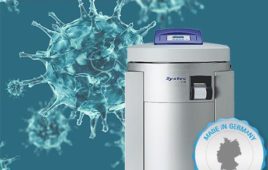Google can find targeted content in articles, books, and other material. I use it every day to answer specific questions, and to find specific references and information. But answers to specific questions or information are not a substitute for education, which can lead to a decision about a topic or problem. An education produces background, theory, context, examples, and references. That’s what’s readily found in books, but less readily found by an internet search. Said another way, Google can’t keep us from making mistakes; a well-founded book by an experienced author can.
This column is a review of three books, available directly from CRC Press or Amazon, about which you should know.
HANDBOOK FOR CRITICAL CLEANING1
This 2011 work is edited by Barbara and Edward Kanegsberg, who have decades of credible experience in industrial cleaning, particularly critical cleaning, and who also write a column for this magazine.
Of the many chapters I found of interest and value, these are just a few:
- A chapter on equipment design provides both fundamental education and specific guidance about design of rinsing for aqueous cleaning systems.
- An excellent chapter on “Cleaning Agent Chemistry” is replete with tables of useful basic data about components of aqueous cleaners, specific solvents, stabilizers, conditioners, etc.
- A unique chapter on scale-up of laboratory results to a plant design can easily save the price of the book in avoiding mistakes.
- A valuable chapter, written without deference to political correctness, about how to select options of cleaning products which minimize environmental impact.
- An informative chapter introducing U.S. readers to the applicable details of the internationally-founded REACH program for management of chemicals and their hazards.
Any firm serious about managing its cleaning operations should have this book available to their person responsible for that operation. It’s a strong contribution to the technical literature supporting industrial cleaning because of the diversity of its coverage and strengths of its many authors and chapters.
INDUSTRIAL HYGIENE CONTROL OF AIRBORNE CHEMICAL HAZARDS2
I have long sought a book about the monitoring and management of airborne pollutants that was neither a treatise on medical harms, nor a recitation of epidemiological data, nor a paean about avoidance altogether of chemicals. I wanted a book I could recommend to clients, and use with them, to control exposure of the chemicals they used. This is that book.
Significant chapters and topics include:
- Basic aerosol behavior and how to model it—an absolutely crucial topic.
- Health criteria for control of chemical exposures, including substantial tables of data and references.
- OSHA ventilation standards.
- The fluid dynamics of ventilation and how to use that engineering principle to design exhaust hoods, air cleaners, stacks, fans, etc.
- Control of operating costs of required ventilation.
- Selection, purchase, maintenance, and administration of personal protective equipment.
Consistent nomenclature makes Dr. William Popendorf’s book easy to use, as do his many clear, simply drawn illustrations. Every chapter ends with “practice problems.” His use of footnotes to augment text adds value. I recommend it.
HANDBOOK OF DETERGENTS3
These volumes are recent additions to the esteemed Surfactant Science Series, now fleshed out to 141 volumes. Professor Uri Zoller is one editor of the overall series.
I had thought these volumes of a renowned and growing series would provide both theoretical and practical examples about formulation of aqueous cleaning products based on surfactants.
I was wrong.
In the volume Part D: Formulation, exactly 126 words are dedicated to the topic of my interest. This volume is written for those interested in personal care products, laundry detergents, and liquid bleach, maintenance cleaners, dishwasher, oral care, automotive, and other cleaning products.
It’s the same with the volume Part E: Applications. Chapters cover applications such as dishwashing, bodycleansing, hair care, fabric softening, and the like.
SUMMARY
Budgets today are stretched thin. They have little room for “frills” like travel. Some managers believe the purchase of books are among those frills. They’re not. Books can pay for themselves by keeping us from making mistakes. I suggest your budget include two of these three publications.
References
- ISBN 1439828261, published by CRC Press, second edition, 2011.
- ISBN 0849395283, published by CRC Press, May 2006. Written by Professor (and Dr.) William Popendorf, who is a Research Professor of Industrial Hygiene at Utah State University, has been a director of the American Industrial Hygiene Board, and has more than 30 years of experience in his field.
- This is a five-volume edition in a Surfactant Science series. This review covers only two volumes: (1) Part D: Formulation, Volume 128, edited by Michael S. Showell, published in July 2005 by CRC Press, ISBN 0824703502 ; and (2) Part E Applications, Volume 141, edited by Uri Zoller, published in October 2008 by CRC Press, ISBN 1574447572. Dr. Showell has more than 25 years experience in the development of detergent formulations at Proctor and Gamble, Professor Zoller is Professor Emeritus at Haifa University, Isreal. He has published over 20 papers, written or edited nine books, and is a current researcher in the broad field of synthetic organic chemistry.
John Durkee is the author of the book Management of Industrial Cleaning Technology and Processes, published by Elsevier (ISBN 0- 0804-48887). He is the author of the forthcoming book Solvent Cleaning for the 21st Century, also to be published by Elsevier, and is an independent consultant specializing in critical cleaning. You can contact him at PO Box 847, Hunt, TX 78024 or 122 Ridge Road West, Hunt, TX 78024; 830-238-7610; Fax 612-677-3170; or [email protected].



